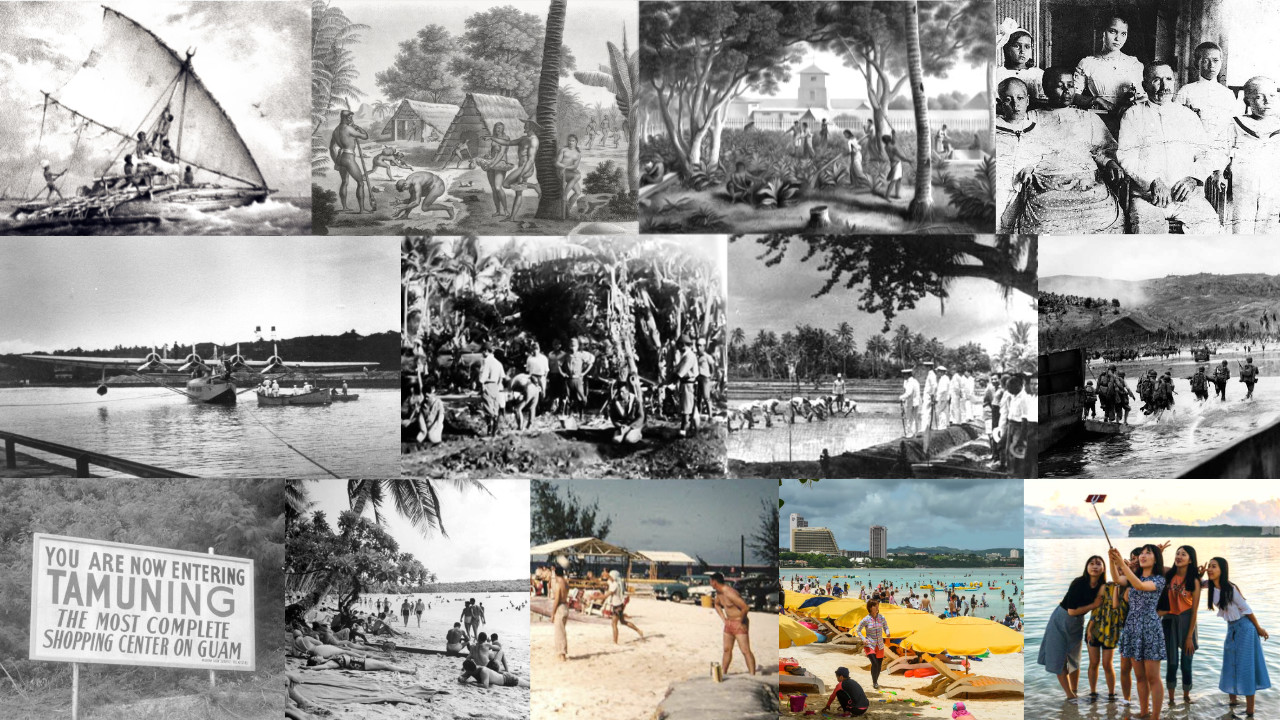History of Guam: A Short Primer
Original Inhabitants
Guam is the largest of the Mariana Islands. The ancient inhabitants of the Marianas, including Guam, were the Chamorros. They were Austronesian people from Southeast Asia, reaching the islands as seafarers. According to experts, they navigated their way using the stars, wind, and currents.
Based on DNA, the original inhabitants seemed to have arrived in two migratory waves. Both waves being from eastern Indonesia. The first was over 4000 years ago, and the second around 1000 years ago.
Two Major Lineages
There was a study of Chamorro matrilineal mitochondrial DNA. According to that study, there are two main ancient lineages. The evidence indicates that there were two prehistoric migrations. Visit the Guam People page for more on Guam’s Ancient Inhabitants.
Society and Social Hierarchy
The early inhabitants had a strict social hierarchy. Born into the upper or lower caste, they would remain in that caste for life. Relationships like marriage were only supposed to be with the same caste.
Their society was matrilineal. Meaning the inhabitants traced their lineage through the female line. So, hereditary rights, privileges, and power passed from generation to generation through women.
Early Chamorro Life and Latte Stones
The Chamorros fished, farmed, and made pottery. They also used plants and natural materials for healing. Some experts believe that the Chamorros built raised homes on top of the latte stones. The latte stones were large, capped pillars that the Chamorros crafted from limestone.
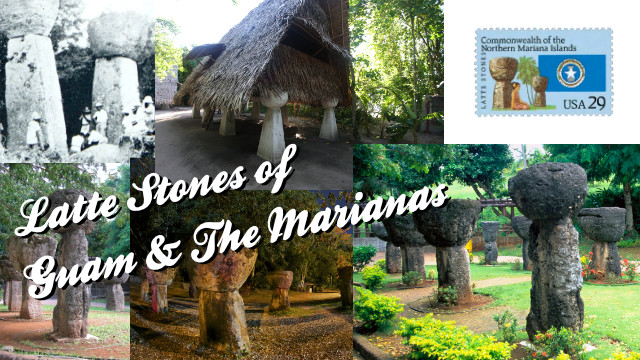
Spanish Colonization
Spanish colonization lasted for three centuries. Roughly around the same amount of time that Spain occupied the Philippines.
Colonization brought suffering and death. Guam’s indigenous population experienced a significant drop after the Spanish colonized. A result of conflict with Guam’s colonizers, the introduction of diseases. Add in a couple of natural disasters, and the numbers whittled away. Some speculate that by the end of the 1600s, Guam may have lost more than 98 percent of its indigenous people. With a reduction of roughly 75,000 to only around 1000.
The Arrival of the Spanish
Magellan and his crew were the first European explorers to see Guam in 1521. Guam was later claimed by Spain in 1565, with the arrival of Miguel Lopez de Legazpi. It was during this time that Augustinian priests started doing Christian Masses. De Legazpi later left to establish the first Spanish settlement in the Philippines.
Guam served as a stopping point for Spanish vessels traveling the Acapulco-Manila route. Umatac Bay was a key port for ships looking to replenish their supplies and freshwater. After the stop, they continued their journey to Luzon in the Philippines.
During this time, Guam was a Spanish colony ruled by the Viceroy of Mexico. It was not until the mid-1660s that converting native inhabitants to Christianity began. Before that, Spain had not erected any formal settlements on the island. So, contact with local inhabitants was rare, save for occasional trading.
Conversion to Christianity
When Father Diego Luis de Sanvitores arrived from Manila, active conversion efforts started. The occupation of Guam by the Spanish escalated when the conversions began. Sanvitores established a mission in Agana, built a church, and a priest house. He also started baptizing the locals and baptized 3,000 children in three months. The Spanish built several forts and schools and introduced Catholicism.
Colonization led to hostilities with native Chamorro rebels. The Spanish responded by destroying native villages. Some opposed the conversion efforts, and the baptizing of infants was inflammatory. A local chieftain killed Sanvitores after he baptized his child against his will. According to reports, native resistance grew, bolstered by a Chinese man named Choco. Choco held a position of power and prominence. Especially with the inhabitants on the southern part of Guam.
Chamorro Spanish Conflicts
Resistance to the colonizers led to armed encounters and left many Chamorros dead. Some historians even believe that suicide was not uncommon to escape subjugation.
The conflicts also led to the deaths of Spanish priests, their guides, and guards. In 1676, a Chamorro uprising attacked a mission in Sumay and killed the garrison there. From 1678-1683, Spain increased its campaign to reduce Chamorro resistance. They destroyed villages resulting in massive losses for the locals. Many of the survivors fled to surrounding islands to escape abuse by their occupiers. There were only about 30 soldiers and up to 3 priests in every fort or mission that the Spaniards built. Despite their small numbers, the Spanish occupation forces quashed local resistance.
Natural Disasters
In the late-1600s, there were three typhoons before the end of the century. Two of them killed a significant number of people living on Guam at the time.
October 3, 1671 – The storm of 1671 was the first historical record of a typhoon on Guam. The eye passed over the island, with most of the homes on the island toppled. The church and the rectory suffered the same fate. Falling debris and inadequate shelter killed a great many people. The damage to their crops was also a disaster for the people.
November 11, 1680 – The typhoon came from the northern side of the island. Although storms were frequent on the island, this was the most violent one recorded so far. It lasted for two days and caused a frightful disorder. It toppled almost all the houses, smashed canoes, and ruined trees and crops. The sea became so swollen that the people had to flee to the mountains.
The report on the storm of 1680 focused on damage and did not discuss the loss of life. The direction of the storm’s approach may have resulted in greater survivability. Also, there was the amount of loss in life during the typhoon nine years before. Something that might have affected how soon people decided to head to higher ground.
November 20, 1693 – In 1693, a terrible typhoon occurred. It began at dusk with a deluge of rain. The wind moved from north to south and whipped up the sea. It seemed as if the island of Guam would become submerged. The sea broke its bounds and spread inland, taking trees, houses, and churches with it. Even the fortress at Agana toppled and washed away. Those who saved themselves did so by taking refuge in the hills or by swimming all through the night. Not a house or building remained standing on the island. Inland from the shore, sand and stones covered the soil after the sea subsided.
The report starts by describing the winds moving from north to south. So, the typhoon’s eye would have likely made landfall on the east coast, bringing a storm surge with it. Right, where Agana is, and the majority of people on Guam lived.
Disease and Epidemics During the Spanish Colonial Period
As crews of more ships stopped on Guam, Chamorro and foreigner contact increased. This interacting caused a notable depopulation owed to diseases introduced from abroad.
Guam underwent a period of disease resulting from foreign ship traffic. “Disease of the ship” was what the islanders called the scourge of diseases brought by the ships.
In 1688, a severe epidemic raged through Guam, believed to have come from a ship traveling from Mexico. Accounts described it as an influenza-like disease. It reduced the number of local inhabitants even more.
Then, there was an epidemic of smallpox at the end of the 1600s. It led to an even further decrease in the number of Chamorros.
In February 1856, smallpox broke out on Guam after an American merchant ship put in there. During the first few months, it claimed victims only in Hagatna, but soon it moved to other parts of the island. It spread with the speed of lightning to all the villages on the island by the end of August. The epidemic died out in November. According to a count made by the Governor of Guam, it left 5,534 people dead. A full 60 percent of the population died from the epidemic.
Cultural Mixing and Integration
Over time Spain enlarged its garrison on the island. The Spanish also built schools, created industries, and improved farming. They additionally established a militia on the island. The population increased, boosted by an influx of Filipinos settling on the island.

Most intermixing was due to Spanish, Filipino and Mexican men marrying Chamorro women. Some claim that by 1781 the natives and the island settlers were equals. The locals were now Spanish subjects, and they had Spanish citizenship.
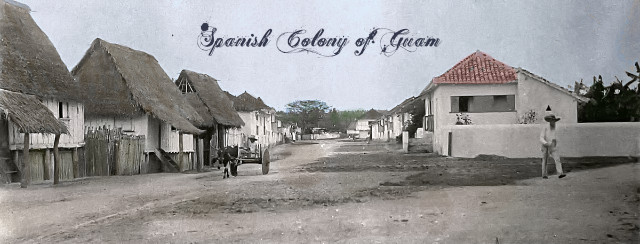
American Colonization
Spain lost the Spanish–American War in 1898. After which Spain turned Guam over to the United States. Thus, beginning the American colonial period for Guam. After the transfer of Guam to the control of the US Navy, it served as the naval station. Hence, serving the interests of American commercial and military ships. Ships that were often traveling to or from the Philippines. Another Spanish colony now under the control of the United States. By 1901 the island was the home to a US Navy yard and a US Marine Corps barracks. Guam also had a telegraph station for the Commercial Pacific Cable Company by 1903. Plus a seaplane base for Pan American World Airways.
World War II
Japan attacked Guam on December 8, 1941, only a few hours after Japan attacked Pearl Harbor.
The American Defense of Guam
The American Defense Force had less than 500 combative personnel.
American Arsenal
- 3 machine guns
- 4 Thompson submachine guns
- 6 Browning automatic pistols
- 50 .30 caliber pistols
- 12 .22 caliber regulation rifles
- 85 Springfield rifles
Most of the Americans’ weapons were WWI period, and the Springfields had “Do not shoot. For training only” written on them.
The USS Penguin tried fighting the Japanese planes off at Orote Point. After shooting down one or more airplanes, the commander ordered his crew to sink the Penguin.
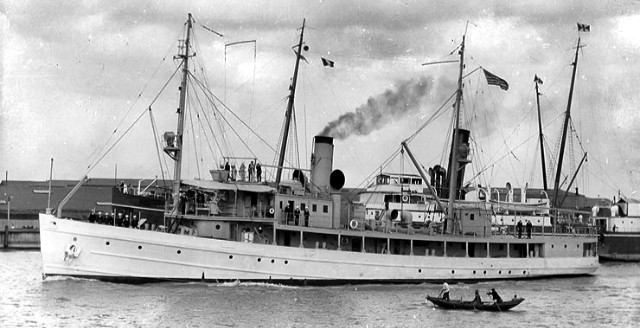
Instead of surrendering, six navy seamen tried to escape and hide. The Japanese captured and beheaded five of them. The Chamorros helped hide US Naval radioman, George Ray Tweed. Learning of this, the Japanese interrogated, tortured, and beheaded Chamorros for information. Regardless of the risk, Chamorro families moved Tweed village to village for 2 1/2 years, never giving him up.
The Japanese Attack
On the morning of December 8, 1941, a Japanese invasion force of 5900 landed on Guam. Within less than an hour, Governor George McMillin surrendered. After the Japanese captured Guam, they told the Chamorros that they did it to liberate them.
The Japanese Occupation
By the beginning of 1942, there were 14000 Imperial Army and Navy forces on Guam. With 22,000 Chamorros and 500 whites. On January 10, 1942, the Japanese took the American military personnel and civilians away. Putting them on the Argentina Maru bound for prisoner-of-war camps near the city of Kobe in Japan.
During the occupation, the Japanese treated all the locals as an enemy force. They subjected the locals to forced labor, family separation, and concentration camp imprisonment. They tortured local priests and killed some of them.
The Japanese would stay in control of the island for the next three years. By 1944 there were 20,000 Japanese troops on Guam. The plan was to increase the number to 30,000 as soon as they could increase the local food production enough.
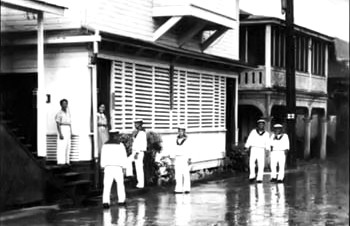
The American Recapture of Guam
In the middle of July 1944, the US arrived with 274 ships to retake Guam. On July 14th, the ships began firing at Guam with 2-inch and 5-inch guns. Starting on July 18th, planes from 13 aircraft-carriers dropped 4,283 bombs for two days. Then on July 21st, the invasion by troops began, and by August 10, 1944, the US had recaptured Guam. The battle cost the lives of approximately 7,000 Americans and 18,000 Japanese.
Memorial Built
In 1978 the War in the Pacific National Historical Park was built to honor this period.
The Guamanian Era
Guam became incorporated as part of US territory under the Guam Organic Act of 1950. Under this Act, there was a new system of government established. With an Administration, Legislature, and Courts. Guam also had its first governor appointed by the US, rather than the Navy. It was during this time when the term Guamanian became the word used to refer to native inhabitants. So, being a Guamanian included Filipinos and others who considered Guam their home.
Since 1952, anyone born on Guam has become a US citizen. This automatic citizenship falls under the Immigration and Nationality Act of 1952. Something claimed to be the result of active campaigns by Chamorro leaders. Local leaders also championed greater autonomy, with little given.
Guam Today
Due to its unique history, Guam has served as a mixing ground for different cultures. Filipino, Japanese, Spanish and American cultures influenced the cultural characteristics of the island.
US Military Occupation
After WWII, The US expanded the military on Guam. The island currently hosts the Joint Region Marianas, which is a US naval command. It oversees the US Naval Base and Andersen Air Force Base on Guam. So, at any given time, there is about 7,000 US military personnel stationed on Guam. Currently, the US Navy and Air Force occupy 1/3 of the island’s land.
Occupying Guam plays a significant role in US military strategy. The island has one of Asia’s best deep harbors. Apra Harbor offers the US valuable protection for its warships. Guam’s high flat top cliffs are perfect for the US airbases. These beneficial natural assets help the US to project its military force in the Pacific. “The Tip of the Spear” is what they call Guam. A possession meant to handle potential threats to US interests in Asia.
Becoming a Tourist Destination
After some of the military restrictions eased, Guam’s development sped up. So, today Guam is a more attractive place for tourists and investors. So much so, that hotel and tourism became the largest private-sector industry. Guam is home to many hotels, restaurants, resorts, and entertainment centers. All catering to both locals and tourists. A thriving industry farming banana, guava, mango, papaya, and breadfruit also exists.
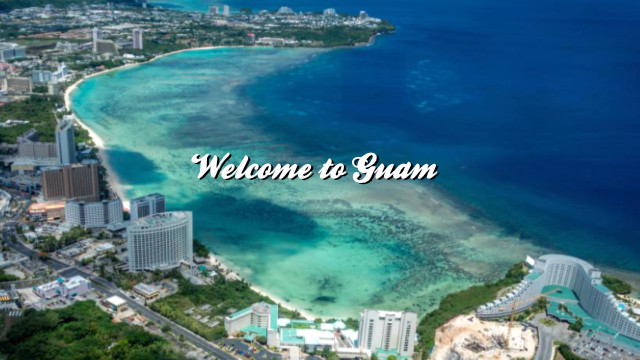
Cultural Mix on Guam
Guam’s history has left the island with a diversified and mixed population. Because of this, Guam has incorporated aspects from many cultures. Spanish traditions, like multi-generational homes and fiestas, are still going strong. Though, most evident is the mark of the 120 years of American colonialism. Good or bad, Guam has become more modern and urbanized than all the other islands in the region. To some who visit, it seems like being in the US. The subjugation of Guam’s people aside, these influences made Guam a fascinating place. Especially for visitors eager to experience many diverse cultures in one place.

Tags: Chamorro, Christian, Citizenship, Colony, Culture, Disease, Epidemics, Guamanian, History, Japanese, Military, People, Spanish, Tourism, Typhoons, United States, WWII


